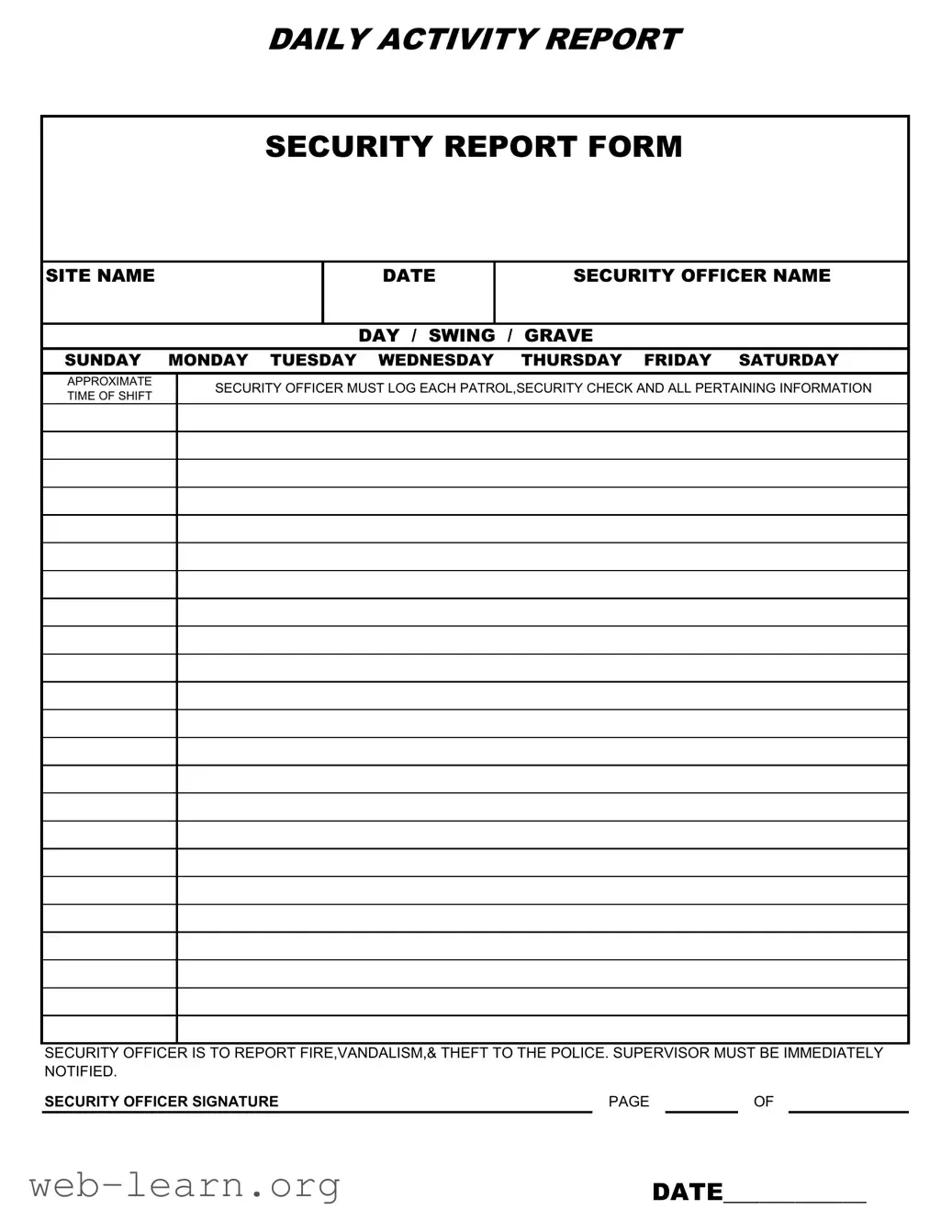Completing a Security Guard Daily Report Sample form is an important responsibility for security officers tasked with maintaining safety and order at various locations. However, there are common mistakes that can often lead to misunderstandings or even violations of protocol. Awareness of these potential pitfalls can foster better reporting practices and ensure that crucial information is conveyed accurately.
One of the most frequent errors stems from incomplete entries in the required fields. For instance, failing to write down the site name or the date can render the report ineffective. Without this foundational information, supervisors may struggle to place the reported activities in context, potentially leading to confusion about specific incidents or actions taken. Each section must be filled out meticulously to provide a full picture.
Another area where mistakes can occur is in the section that asks for the security officer’s name and the specific shift worked, such as day, swing, or grave. Sometimes officers forget to specify their name or to indicate if they were working the day, swing, or grave shift. This neglect can complicate the chain of responsibility, especially if a follow-up is necessary regarding a particular incident or observation.
Inadequate logging of activities is also a significant error. The report requires officers to log each patrol and security check. If this step is overlooked, or if the officer simply writes “patrol” without additional details, important context may be lost. Documenting the specific times and any occurrences during each patrol allows for a clearer understanding of security conditions throughout the shift.
Additionally, mishandling reports of incidents such as fire, vandalism, or theft can have severe consequences. Officers are required to report these matters to the police and, importantly, notify a supervisor immediately. A common mistake occurs when incidents are either underreported or left entirely unmentioned. Such omissions might delay necessary action or investigation, thereby increasing risk.
Lastly, one of the simplest yet most impactful mistakes is leaving off the security officer’s signature and the corresponding date at the end of the report. This final step serves not only as an acknowledgment of the information reported but also solidifies accountability. Without these signatures, the legitimacy of the report can be questioned, which undermines the credibility of the entire process.
By being aware of these common errors, security officers can enhance the quality of their daily reports and contribute to a safer and more accountable environment.

